
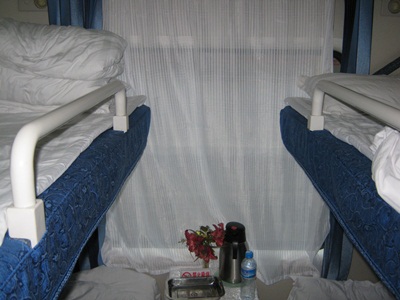
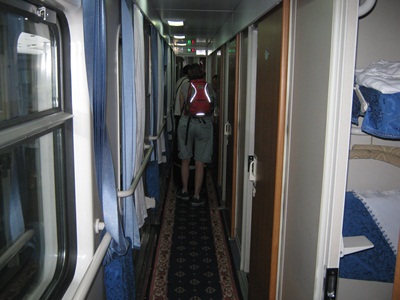
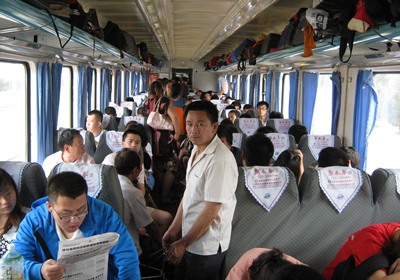
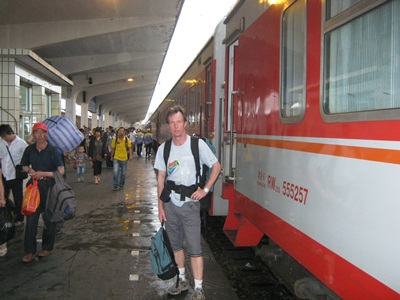
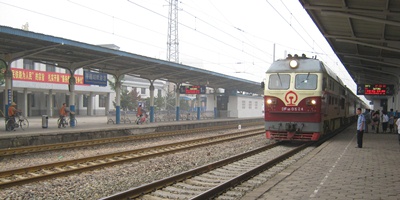
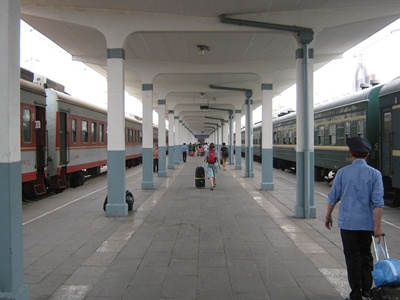
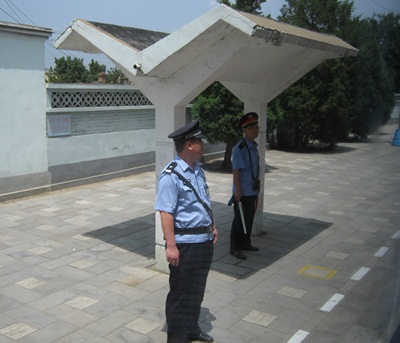
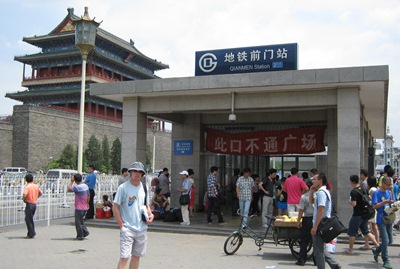
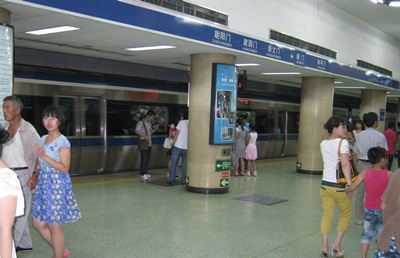
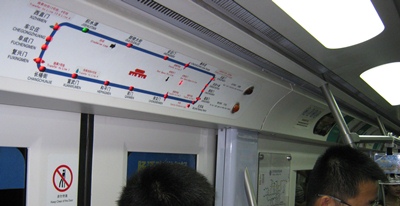
My wife and I travelled on several long-distance trains while exploring China in June and July 2012 (see my travelogue). During the course of this trip I made the following observations and notes about getting around on China Railways:
(1) Actually getting Chinese train tickets is extraordinarily difficult, not because of the language barrier (which is a problem, but not an insurmountable one), but because they always seemed to be sold out. We only ever succeeded in getting train tickets for the day we wanted to travel if we booked a week or more in advance. Every time we tried to buy tickets for the next day or the day after we were told that there were none left.
Although Chinese train tickets can only be bought up to ten days in advance, we discovered subsequently that Chinese locals somehow have a way of obtaining tickets even earlier than that. It also appeared as if travel agents and authorized ticket resellers have access to blocks of additional tickets on most trains, all of which means that the odds are stacked against an ignorant foreigner being able to get a seat on the train he wants (we surmised this when we met three Sri Lankans with a private tour guide in Xi'an ; the guide was easily able to obtain train tickets for them for the next day when we had been unable to get any for even a week ahead).
(2) Chinese train stations are run like airports. You cannot get into a station without a valid ticket, and then only to a waiting area (like an airport transit lounge). Once you're in the waiting area you are not allowed onto the platform until just before the train arrives or departs ; tickets are checked again and only people with tickets for the specific train in question are permitted through - just like boarding a plane. Each carriage also has a ticket inspector who stands at the door and checks tickets again.
(3) You must have a valid ID document (Chinese identity card, passport, etc) to buy a train ticket, and all train tickets are allocated to a specific person by name. The name on the ticket is checked against your identity when you enter a train station or board a train. However, we noticed that this rule is not always strictly enforced for foreign passengers.
(4) Anybody entering a train station in China must have all their bags subjected to an airport-style x-ray security check, and passengers themselves are often frisked and/or checked with hand-held scanners.
(5) The security paranoia extends to the Beijing Subway (the inner-city underground railway). You cannot enter the Subway system anywhere in Beijing without having your bags checked through an x-ray scanner.
(6) Train stations in China are frequently some distance from the centre of a city. Cities often have two or three train stations on the edge of the city centre, and because the cities are so big the distance from the city centre to any of the train stations is typically too far to walk. Inner-city buses are fast, frequent and efficient, but these are very difficult to figure out so foreigners tend to take taxis to and from their hotel to the train station. However, taxis are generally plentiful and cheap.
(7) Everybody on a Chinese train must have a seat (or bed, in the case of overnight sleeper trains). No standing passengers are allowed, even for relatively short journeys ... at least that's what we were told by ticket sellers. On one occasion we were desperate to get on a train and begged to be allowed to stand, but were refused in no uncertain terms. "Take a bus" the sales woman told us. No sympathy, no exceptions. However, every train we travelled on contained a fair number of people standing around who didn't seem to have seats, so this "no standing" rule appears only to apply to foreigners [Aside : this rule is not applicable on inner-city commuter or subway trains].
(8) Chinese train stations are manned by staff wearing blue uniforms. All station staff stand to attention on the platform when a train arrives, even if the train isn't going to stop at their station. Quite often they salute when the train departs.
(9) Chinese trains are all ostensibly smoke-free. However, the "no smoking" signs are ignored by many passengers, and the railways staff who frequently walk through the carriages make no attempt to stop people from smoking. Quite often the staff themselves smoke!
(10) On most journeys a staff member will come through the carriage selling all kinds of trinkets and gadgets. On one occasion a guy spent ten minutes extolling the virtues of brushing your teeth and then proceeded to flog toothbrushes. At other times they sell cheap toys, electronic gadgets and other useless rubbish. The people doing the selling are railways staff, not itinerant salesmen.
(11) Trains in China are usually extremely punctual. The trains we boarded from the originating station always departed exactly at the designated time, and when we got on in the middle of a point-to-point route they were never more than a few minutes late.
(12) Every train carriage contains an urn of boiling water that passengers continually use to top up their flasks of tea or to make instant noodles.
(13) There are six classes of travel on Chinese trains:
- Deluxe Soft sleeper
- Soft sleeper
- Hard sleeper
- Soft seat
- Hard seat
- Standing
Deluxe Soft sleeper carriages are the ultimate in train travel in China. Compartments contain only two bunks and have en-suite toilets, TV screens and power sockets for computers, tablets or cell phones.
Soft sleeper carriages are extremely comfortable, with four bunks to a compartment. Clean, crisp sheets and duvets are provided, the floors are carpeted and the bunks are, as the name suggests, soft and comfortable. The only down-side is that there are no showers on board, only a "washing room" in each carriage containing a row of taps.
Hard sleeper carriages do not contain individual compartments - the whole carriage is one open room containing bunks. No privacy at all, but still perfectly adequate.
Soft seat carriages contain comfortable padded seats with plenty of leg room. This class seemed to be the most popular because all soft seats were already sold out every time we tried to buy tickets.
Hard seat carriages are tightly packed with seats like an aeroplane. However, the seats are not hard benches as you would think but individual seats that are still fairly comfortable. We rode "hard seat" on a couple of long trips without undue discomfort. The biggest problem was that this is the class where "standing" passengers are sent, so the carriages are always very crowded.
Standing tickets were a mystery to us - no ticket seller would sell us these but every "hard seat" carriage we saw or travelled in contained people standing. Is this a class for Chinese locals only? If not, how do you buy these tickets?
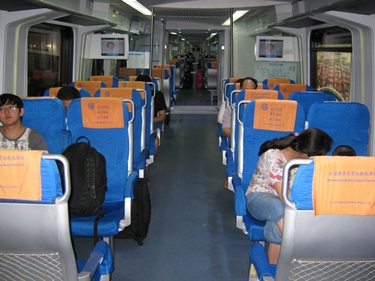
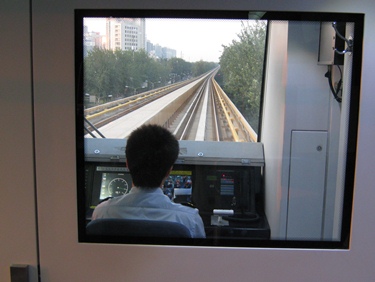
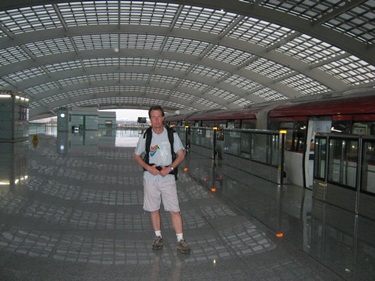
Train travel in China can be extremely relaxing and enjoyable, far more so than going by bus - trains are very comfortable and generally on time, and stations are clean. Provided you plan far enough ahead to be sure of getting tickets, the train is by far the best way of getting around this huge and diverse country.
 © Paul Kilfoil, Cape Town, South Africa
© Paul Kilfoil, Cape Town, South Africa